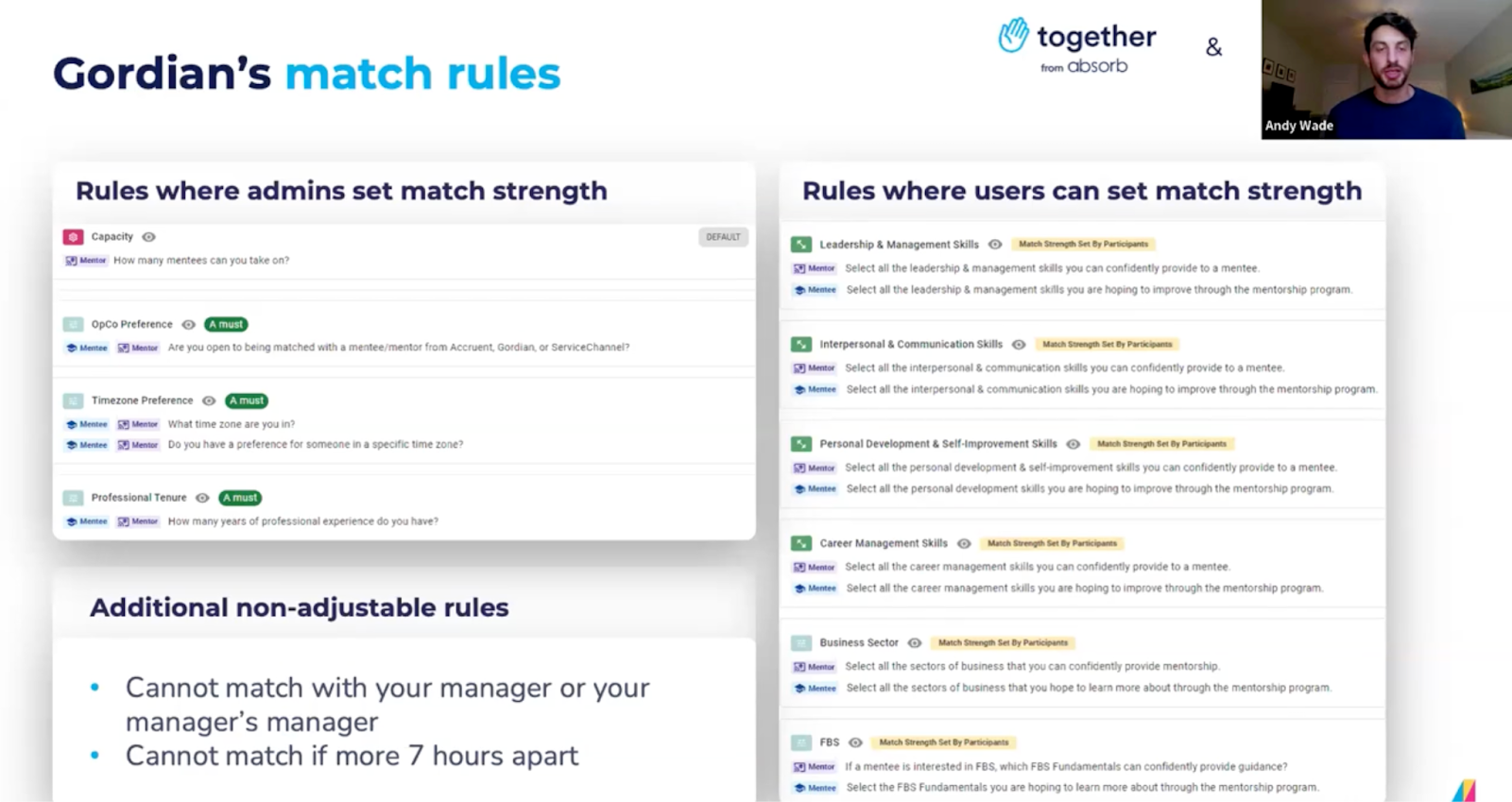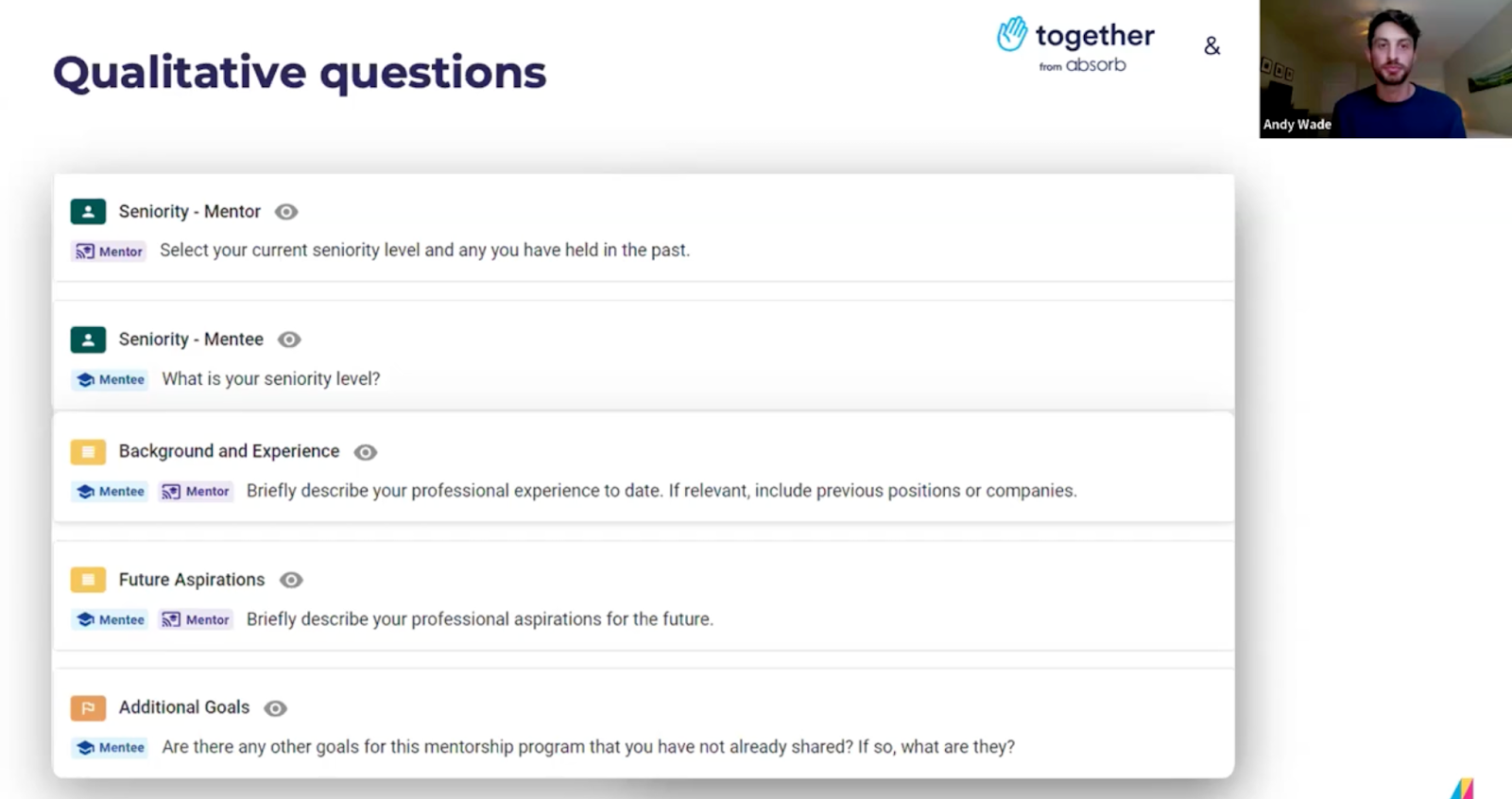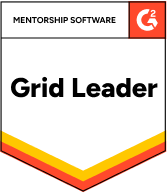We’re all on a learning journey, whether we’re in a classroom or not. As a father to two-and-a-half-year-old twins, I can tell you that I’m dealing with a constant onslaught of learning.
And as much as I’m learning every day in my role as a father, there’s just as much—if not more—for me to learn in the workplace. And I’m sure it’s the same for you, too.
I’m currently the Training Programs Manager at Gordian, and I oversee a mentorship program across three Fortive-owned operating companies (Gordian, Accruent, and ServiceChannel) who share a common mission to support facility and asset lifecycles.
As you might imagine, the setup of having several operating companies leads to some complexity (and more than a few challenges) when trying to roll out company-wide initiatives like mentorship programs.
When it comes to goals, for example, individual managers have goals for their teams, departments have goals they’re trying to meet, and each operating company has its own goals as well.
Trying to set up a mentorship program brought us face to face with the fact that these goals aren’t always aligned. In fact, I often compared it to trying to get a piece of legislation through Congress. Each person who touches it has their own ideas of what it should be and what it shouldn’t—and these ideas don’t always align across the organization.
Luckily, partnering with Together allowed us to overcome some of these hurdles and come up with a program that works for everyone.
Here are a few of the lessons we learned along the way.
Make your mentorship program open and accessible
One of the ideas we quickly settled on was what we call the “evergreen model” for mentorship. The mentorship program is open to everyone and people can join or leave at any time. We decided on this model because we want the program to have an inviting atmosphere. We want participants to be in control of their own experience.
When in doubt, let the mentees and mentors decide
In a large company with a lot of different stakeholders, you’ll likely find that everyone has their own ideas of what the program should achieve. But instead of letting managers or leaders make decisions, whenever possible, let the mentees drive. After all, who is the program for, if not the mentees?
But be prepared to provide guidance when it’s beneficial
At the same time, there will be times when it makes sense to provide guardrails or guidance based on your expertise as an L&D professional. At Gordian, we have a few non-adjustable rules. For example, we don’t allow mentees to match with their own manager or their manager’s manager. This is because we want mentees to feel comfortable coming to their mentor with whatever problems they’re facing and we want to remove the power dynamic from these conversations.
We also set certain match rules within Together where admins can set the match strength (what we consider to be non-negotiables), but we have other rules where users can set match strength.
Let’s take a closer look.
Rules where admins set match strength
- Capacity: We want to make sure mentors are not bogged down with too many mentees, so we’ve set capacity rules to limit the number of mentees a mentor can match with.
- OpCo: We understand that people might prefer to match within their own operating company. That’s why we set a rule that both the mentor and mentee must identify that they want to match within the same OpCo, otherwise they are not an eligible match.
- Timezone: We don’t want mentors feeling like they have to be awake in the middle of the night to have conversations with their mentees, so we’ve set a maximum of a seven-hour time difference to avoid that situation.

Rules where users can set match strength
We want both mentors and mentees to be able to get matched based on the skills they’d like to learn or share, so we allow users to set match strength based on categories like:
- Leadership and management skills
- Interpersonal and communication skills
- Personal development and self-improvement skills
- Career management skills
This combination of rules allows us to set everyone up for success while still having flexibility to find the best match.
Encourage mentees learn as much as possible about potential mentors
As part of the mentor and mentee matching process in Together, we’ve created survey questions for both mentors and mentees. Some of the questions collect basic information such as the employee’s seniority level while others are designed to get more qualitative information such as their future aspirations and long term career goals.
Once a mentee has completed their part of the questionnaire, the algorithm will take all of these inputs and suggest a potential mentor for the mentee. But this doesn’t mean the mentee is required to match with this mentor. They still have the ability to read potential mentors’ long-form answers and select the mentor who they feel is the best fit for their goals.

This is another case of letting the mentee drive their experience rather than having us tell them what it should be like. As a result, mentees are more likely to get what they want out of their mentorship experience.
Let the mentoring software do the admin work for you (so you can focus on higher-impact activities)
Like many L&D professionals, I juggle a range of responsibilities—and overseeing our mentorship program is just one of them. Funny enough, my mom used to run a mentorship program too, but for her, it was a full-time job. She handled everything: sparking interest, recruiting mentors and mentees, matching them up, and even coordinating their sessions.
But I’m grateful that with Together’s mentoring software, I don’t even have to worry about matching and scheduling—those parts are entirely out of my hands. That means I get to focus on the more impactful activities like driving interest and getting people involved. Together takes care of the more labor-intensive and time-consuming part of managing a mentoring program and I get to be the cheerleader, drive interest, and troubleshoot any one-off issues that come up. This tradeoff was a no-brainer for us when choosing Together as our mentorship software.
Build mentorship into every aspect of the employee experience
I just mentioned that I focus a lot of my energy on driving awareness and participation in our mentorship program. You might be wondering what this looks like. My guiding principle is to make sure we remind employees about mentorship through every stage of the employee journey. For new hires, we make sure to incorporate information about mentoring in their onboarding experience. It might be a little too early for them to actually sign up at this stage, but it at least plants the seeds so they know it exists.
We also make sure to remind people about mentorship as part of our professional development and manager training. And I just keep my eyes open for any relevant opportunities throughout the year when I can offer public service announcements and remind employees that this resource is there for them, whether that’s at a company all hands or via chat or email.
Keep track of how your program is progressing—but don’t get too bogged down in the details
Once you have a mentorship program up and running, you’re going to want to track how it’s performing. There are so many different outcomes that you could measure and it’s easy to get bogged down.
Because one of our guiding principles is “let the mentees drive,” I return to that principle when measuring program success. The primary way we do that is by measuring sustained engagement and satisfaction. And Together makes that really easy with the reporting dashboard. This shows me that we’ve had over 600 sessions, over half of the participants have given feedback, and the average rating is 3.9 out of 4 for everybody.
My advice to anyone who’s getting started with collecting data on your mentorship program? Don’t get lost trying to measure every possible outcome. If people are coming and they’re happy, they’re getting something out of the mentorship program. And that means it’s improving your culture, and ultimately their output as well.
Final thoughts: The most successful programs let mentees decide how and when to engage
I’ve mentioned this a few times, but it’s worth repeating: I think the beauty of our mentorship program is that mentees have the ability to participate how they’d like. They can choose the cadence and level of engagement that works for them; it’s not something that’s dictated by anyone else.
When setting up your own mentorship program—especially if you’re also in a complex organization with multi-layered goals like Fortive—this type of flexibility and agency is the key to success.



.svg)






.svg)

